🪶 Honoring the Aquinnah Wampanoag of Noepe on Martha’s Vineyard
A year-round guide to learning from, supporting, and celebrating the Island’s first people
Today we recognize Noepe as the homeland of the Aquinnah Wampanoag. With gratitude and respect, this guide shares how visitors and locals can learn about, protect, and celebrate Wampanoag culture year-round.
📜 Wampanoag Continuity on Noepe
Homeland: Noepe, specifically the western headland of Aquinnah
Population: ~1,300 enrolled members
Federal Recognition: Restored in 1987 after generations of advocacy
Governance: Tribal Council and and elected leadership
Cultural Hub: Aquinnah Cultural Center (ACC) — located at the historic Vanderhoop Homestead, featuring exhibits, oral histories, and seasonal programming led by tribal members. Currently closed for the 2025 season.
Language Revival: Wôpanâak Language Reclamation Project (WLRP) — founded by Jessie Little Doe Baird, bringing back the Wôpanâak language
Ongoing Initiatives: Land and marine conservation, youth cultural education, and the preservation of ceremonies
🌾 Traditions That Continue Today
Aquinnah Wampanoag Powwow (early September): The Tribe’s largest annual gathering takes place each fall at Aquinnah Circle. Dancing, drumming, food, and crafts fill the weekend, celebrating community and cultural continuity. Visitors are welcome but are asked to follow arena etiquette.
Indigenous Peoples’ Day (mid October): Each year, the Island gathers at Felix Neck Wildlife Sanctuary for a free celebration hosted by Sassafras Earth Education in collaboration with Wôpanâak speakers, drummers, and musicians (for 2025 this occurred yesterday).
Cranberry Day (mid October): A harvest tradition dating back centuries, when tribal members gather to pick cranberries, cook over open fires, and share food and stories. It’s primarily a community celebration, sometimes observed privately, and stands as one of the Island’s oldest living traditions.
Wampanoag Artisans Fairs (spring and fall): Held twice a year in Aquinnah, these juried markets feature beadwork, wampum jewelry, wood carving, textiles, and traditional foods by Wampanoag artists. The fairs are small but deeply meaningful. It’s one of the best ways to purchase directly from Indigenous makers and support year-round livelihoods.
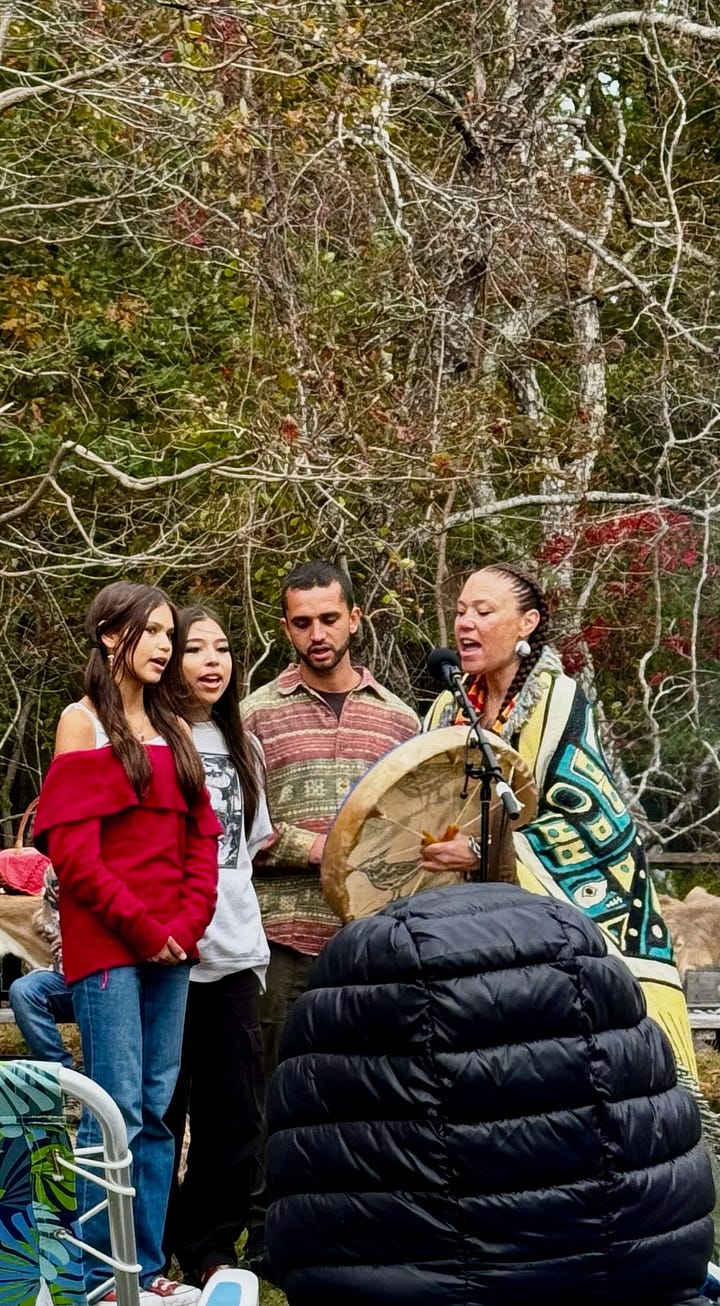
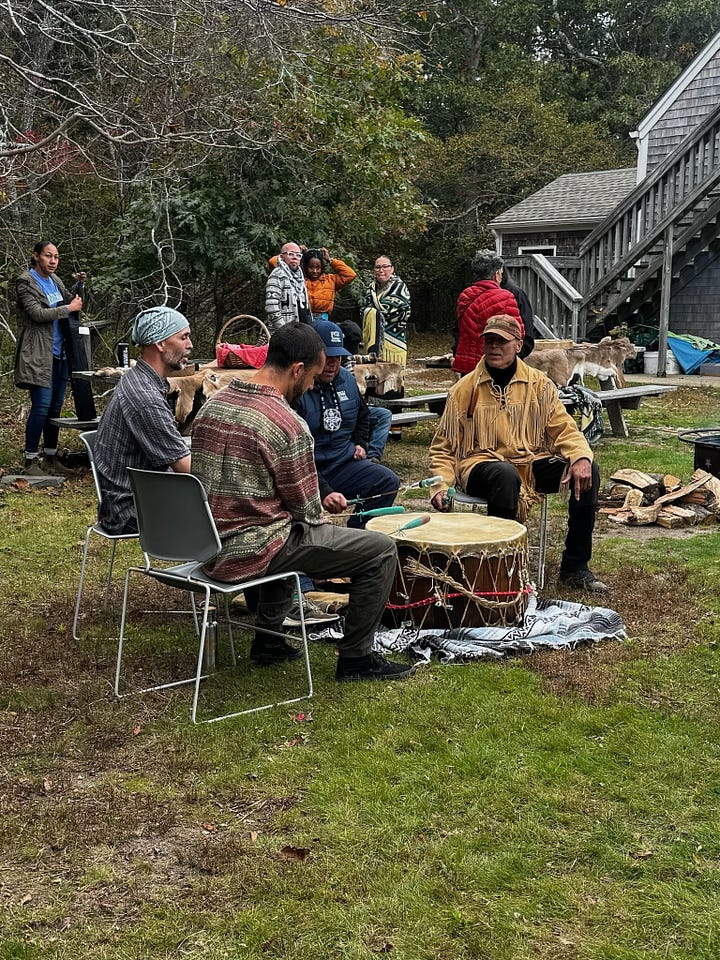
👩🏽🎓 Cultural Life & Learning
These programs are community-based and primarily for tribal members and their families, but they’re an important part of understanding how Wampanoag culture continues to thrive today.
Tribal Youth Group: Open to students in grades 9–12, the Tribal Youth Group plans community events, conferences, and cultural trips that build leadership and connection to heritage.
Cultural Nights: Family-friendly evenings hosted by the Tribe and the Aquinnah Cultural Center where members gather to share traditional arts, food, and stories. These informal gatherings help pass down lifeways through hands-on learning.
Language Lives: The Wôpanâak Language Reclamation Project (WLRP) continues to restore and teach the Wampanoag language through classes, youth programs, and community gatherings. The project’s success has inspired other Indigenous language revivals across the country.
Sassafras Earth Education (Aquinnah): A Wôpanâak-led nonprofit offering land-based education, summer camps, and Indigenous awareness programs for children and teens. Sassafras centers connection to nature, intergenerational teaching, and equity—providing full tuition support for Wôpanâak, First Nations, and BIPOC youth.
For visitors: If you’re visiting when the ACC is closed for the season, you can also learn more history at the Martha’s Vineyard Museum. The ongoing gallery One Island, Many Stories introduces Island history and includes Wampanoag connections across its themes.
🛒 Support Native-Owned on MV
Supporting Native-owned businesses and artisans is one of the most meaningful ways to honor Wampanoag culture year-round. Here are a few island spots to know (check seasonal hours before visiting):
Aquila — Native-owned coffee and retail shop with locations at the Aquinnah Cliffs and YMCA. Known for partnerships with community spaces.
Gay Head Store — Wampanoag-owned general store and snack stop at the Circle; pick up staples, sandwiches, and locally made goods.
Hatmarcha Gifts — Wampanoag-owned boutique offering handmade jewelry, beadwork, and gifts.
Orange Peel Bakery — Native-owned, famous for its wood-fired bread, pizza nights, and welcoming community table.
More at the Circle — Bowen’s Arrow, Cliffhangers, Stony Creek Gifts, Island Naturals, and individual Wampanoag artists featured through the ACC’s Shop Our Community list.
The Tribe also continues to pursue economic sovereignty through development projects, including a proposed Class II gaming facility in Aquinnah. While construction remains on hold pending local permitting, the initiative reflects broader conversations around tribal self-determination and sustainable opportunity on Island.
📚 Reading List by Native Islanders
Joseph Lee (Aquinnah Wampanoag), Nothing More of This Land — A personal/community lens on sovereignty and identity rooted partly on MV.
Carrie Anne Vanderhoop, Wôpanâak Seasons — A child’s-eye tour of the seasons in Aquinnah (Neope).
Linda Coombs (Aquinnah Wampanoag), Colonization and the Wampanoag Story — Clear, accessible context for families and classrooms.
Jannette Vanderhoop, Cranberry Day: A Wampanoag Harvest Celebration — A picture-book window into the holiday’s meaning.
Stacy Elizabeth Hall (illus. Jannette Vanderhoop), The Legend of Katama: The Creation Story of Dolphins — A Vineyard-centered Wampanoag legend for middle-grade readers and up.
This list is not exhaustive. Many more titles by Wampanoag and Indigenous MV authors are sold locally (often self-published) at the MV Museum, Bunch of Grapes, Edgartown Books, and directly via the ACC.
🤝 Visiting with Respect
Visiting Wampanoag land is an opportunity to listen, learn, and move with care.
At Powwow, listen first—stand quietly during prayers, and follow all requests from the emcee. Ask permission before photographing dancers or ceremonies.
When visiting the Cliffs, stay on marked paths and heed signage; these are sacred places, not just scenic ones.
And whenever possible, buy directly from Indigenous artists and vendors, supporting the hands and stories behind the work.
True respect means recognizing that you’re a guest on living, sovereign land.
*Editor’s note: I’m learning and listening—if I missed something or misframed a detail, please send a kind note and I’ll update promptly.
Reference Graphics:
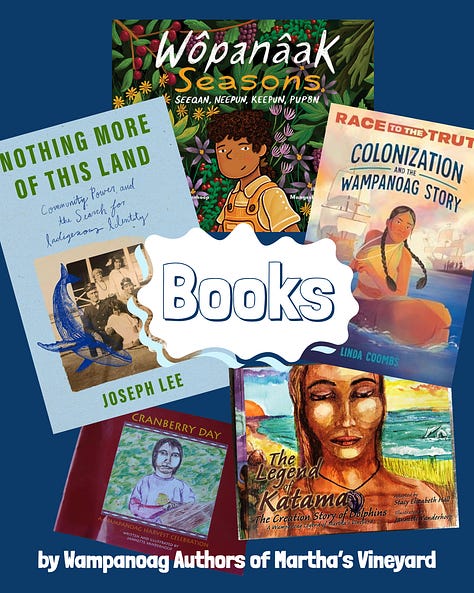
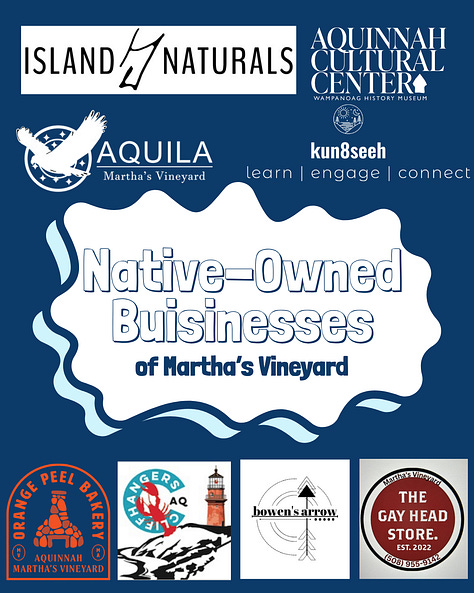
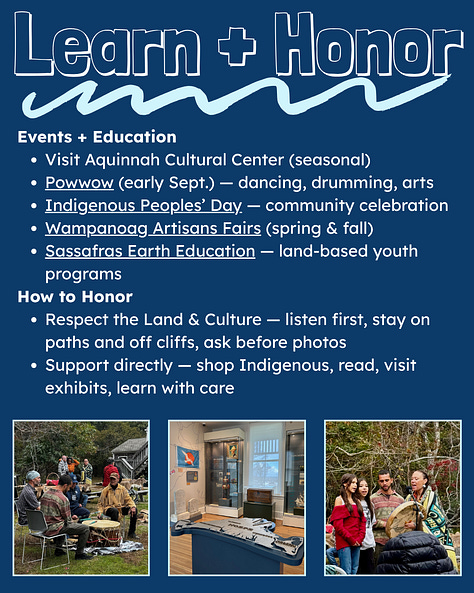


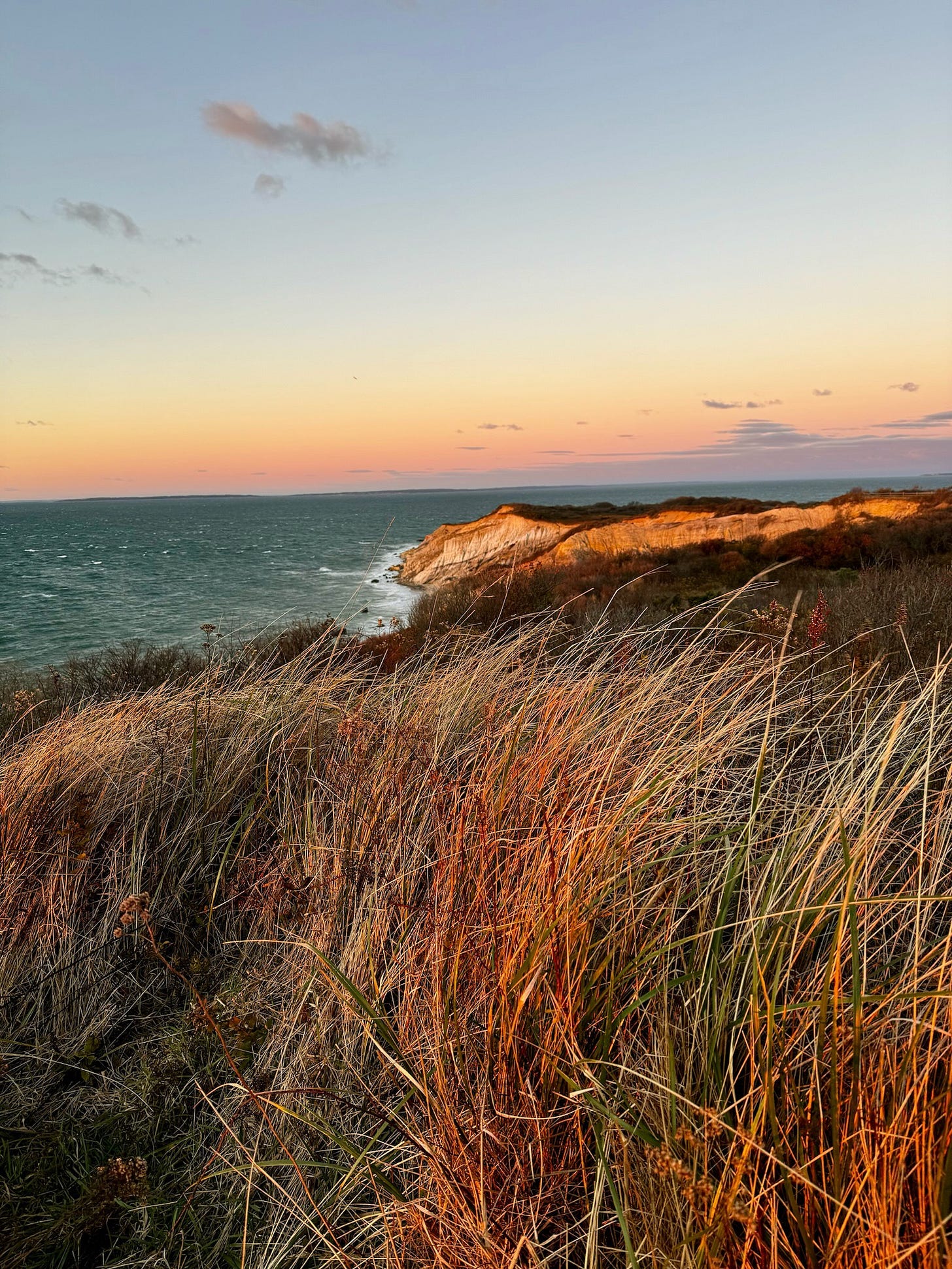

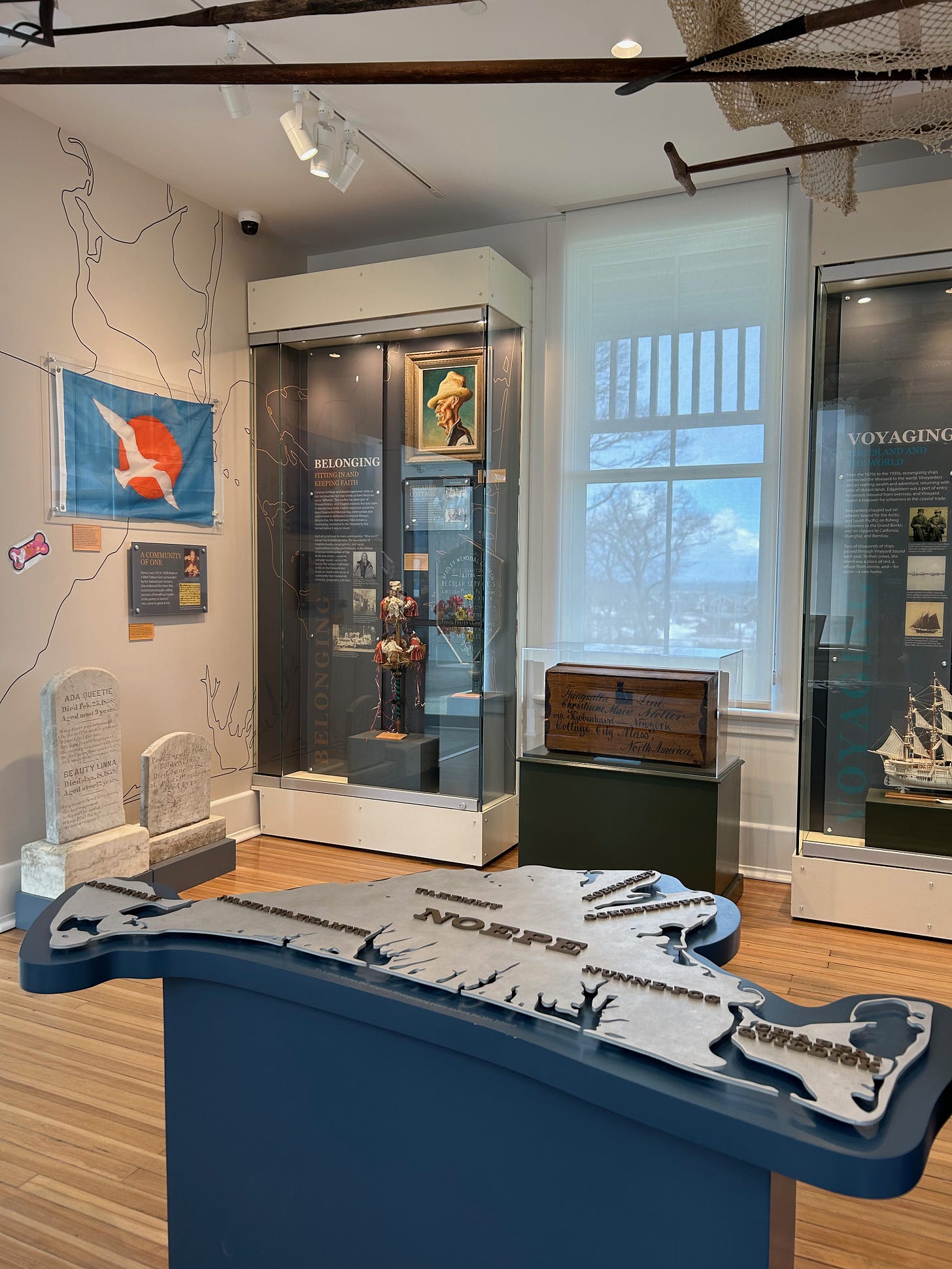


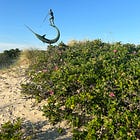
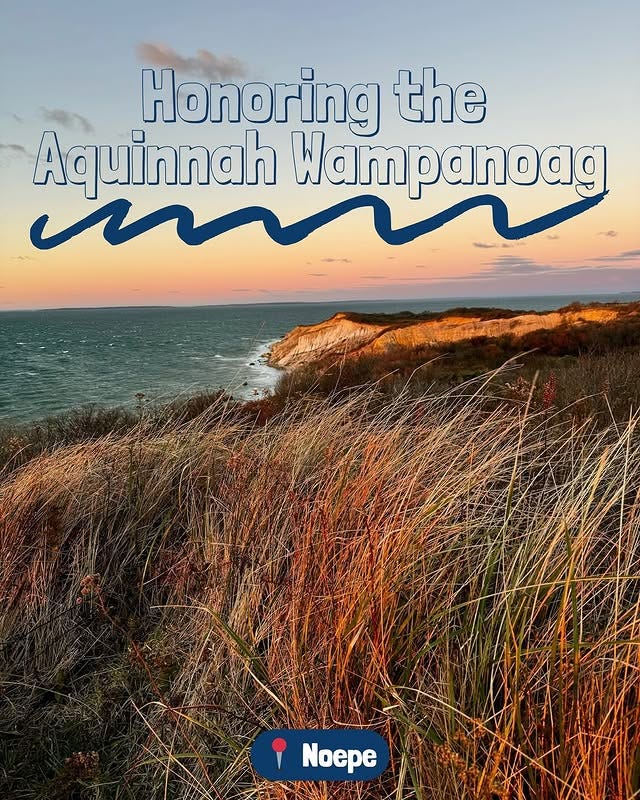
Wonderful post!